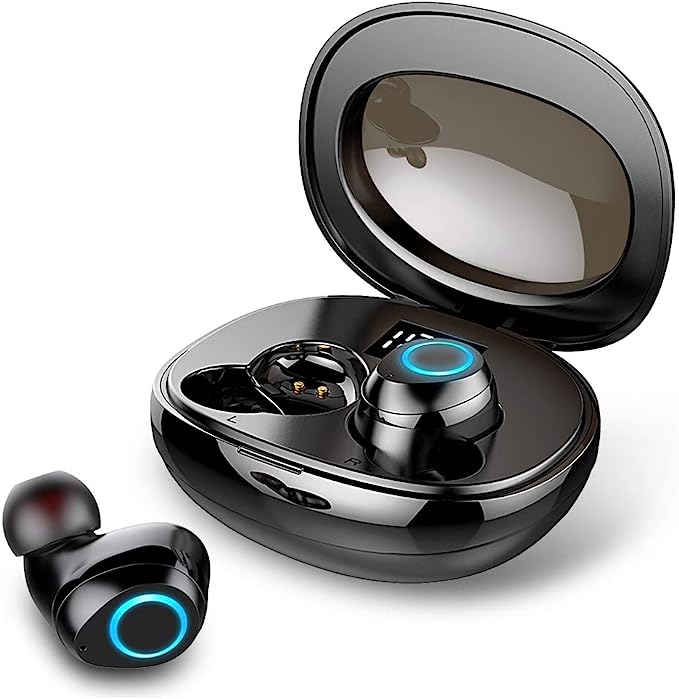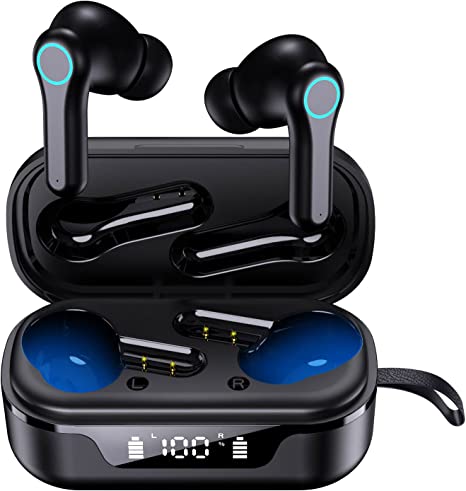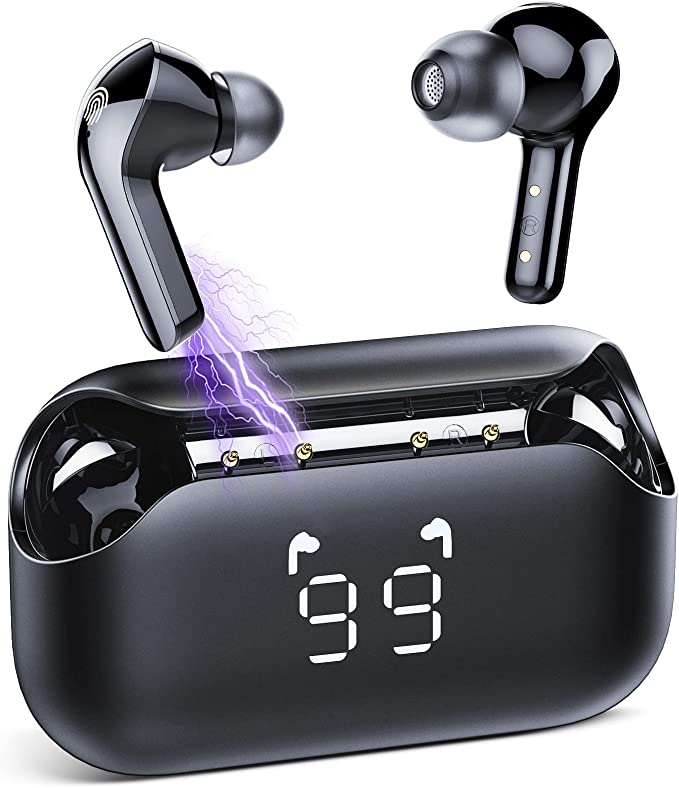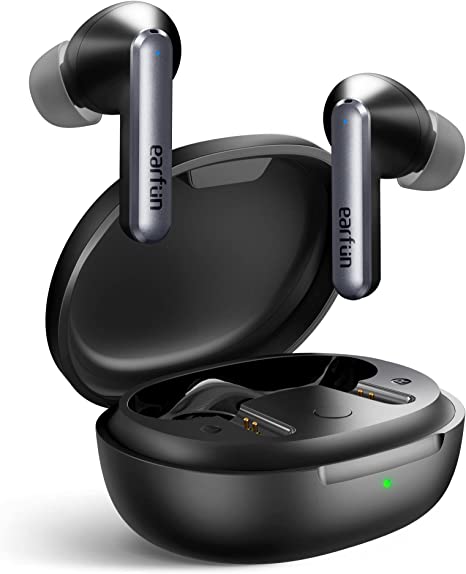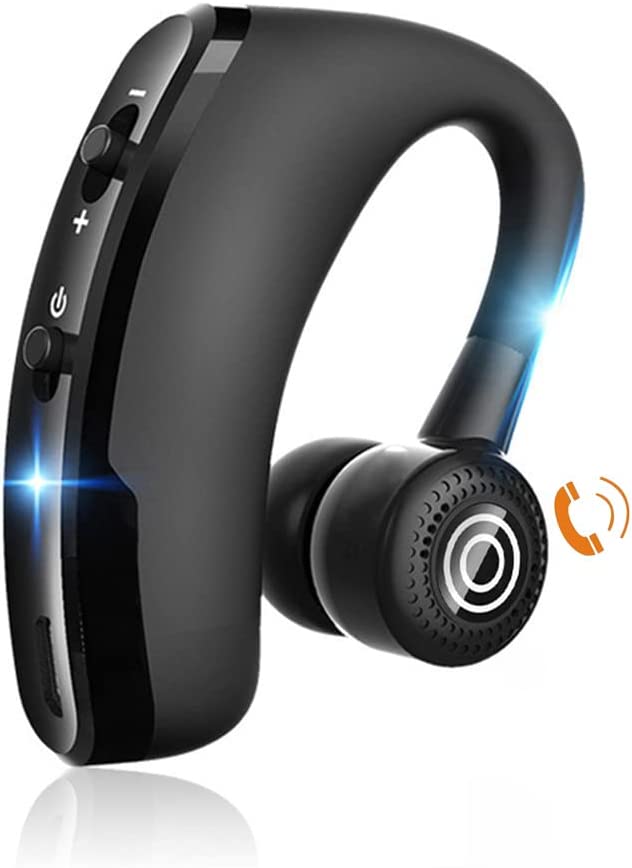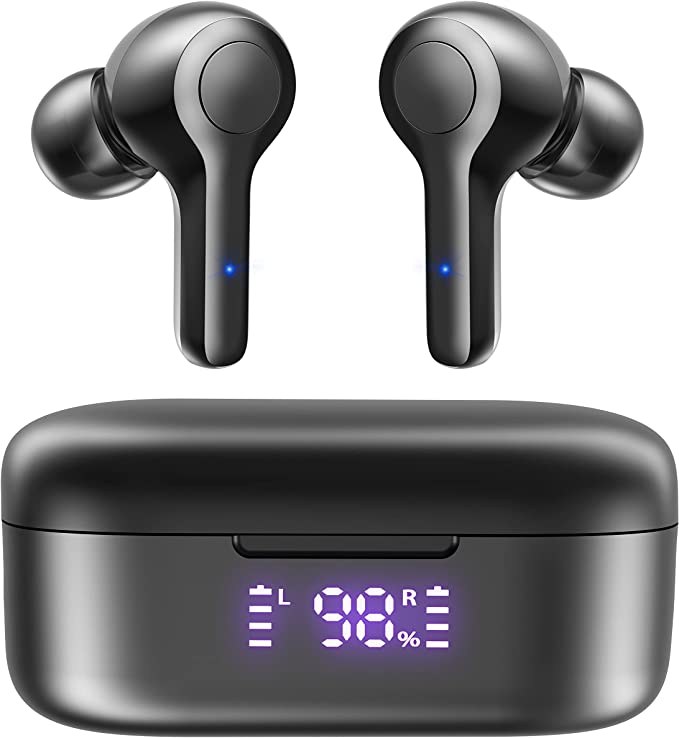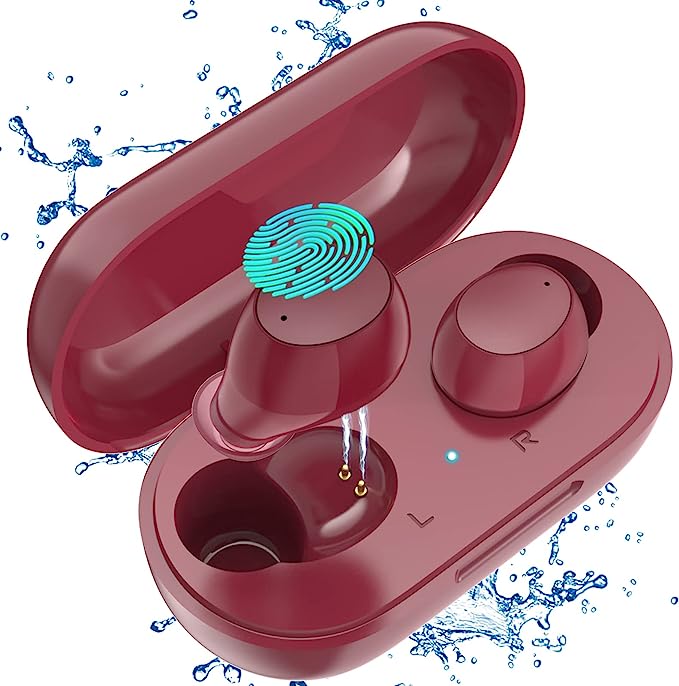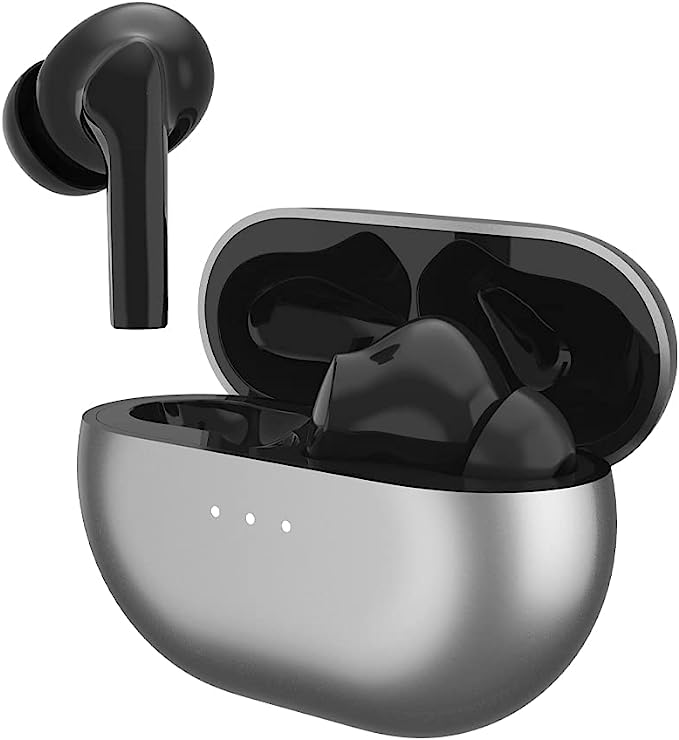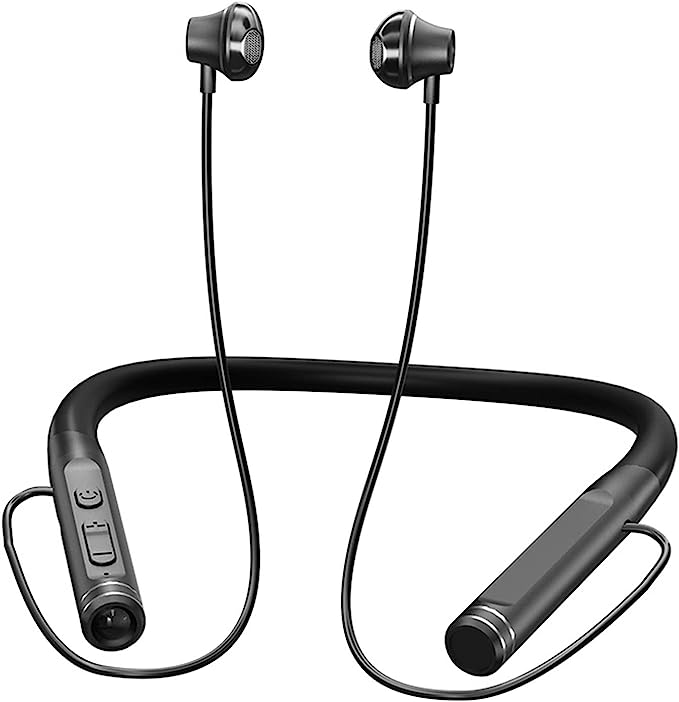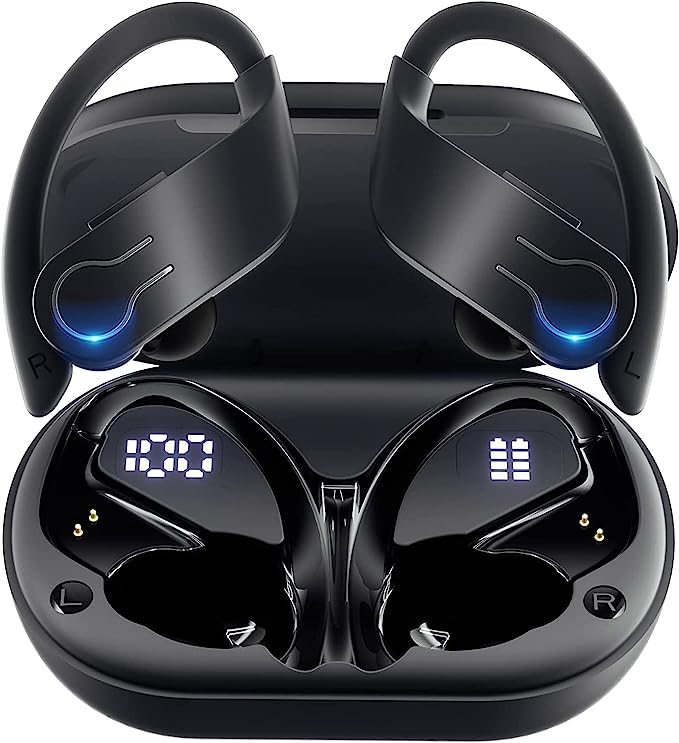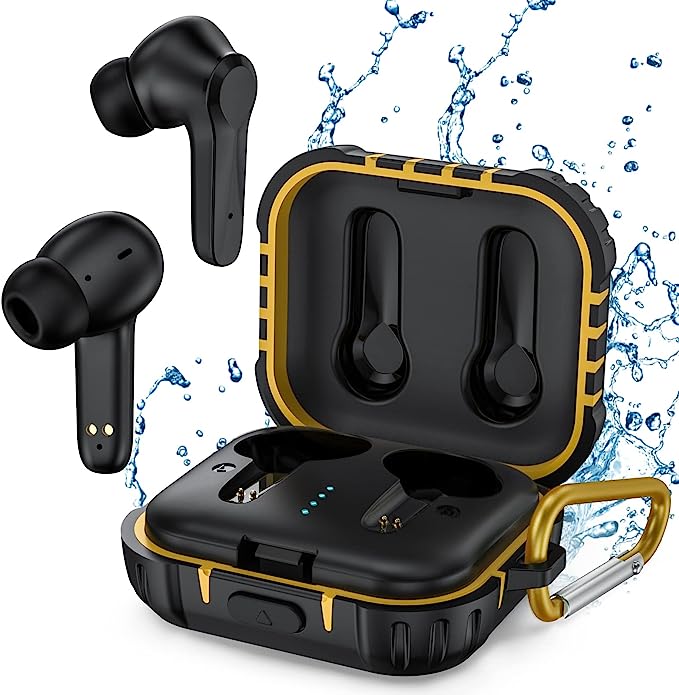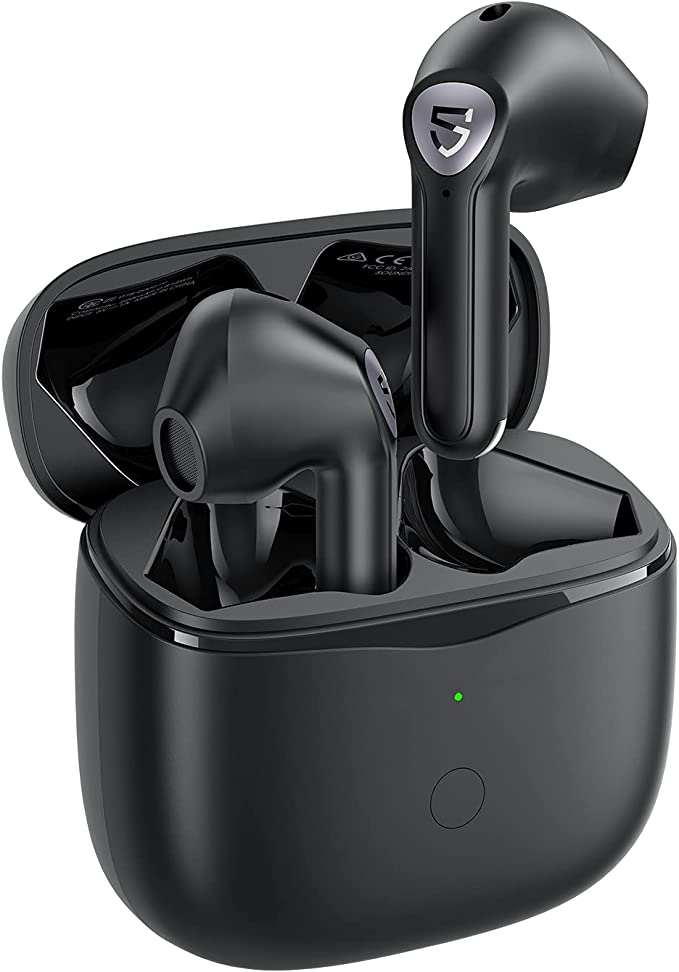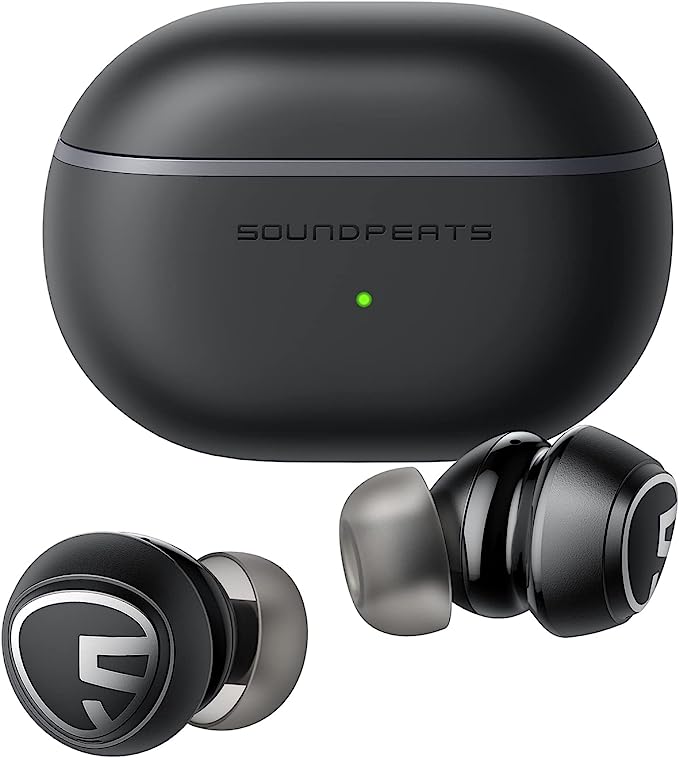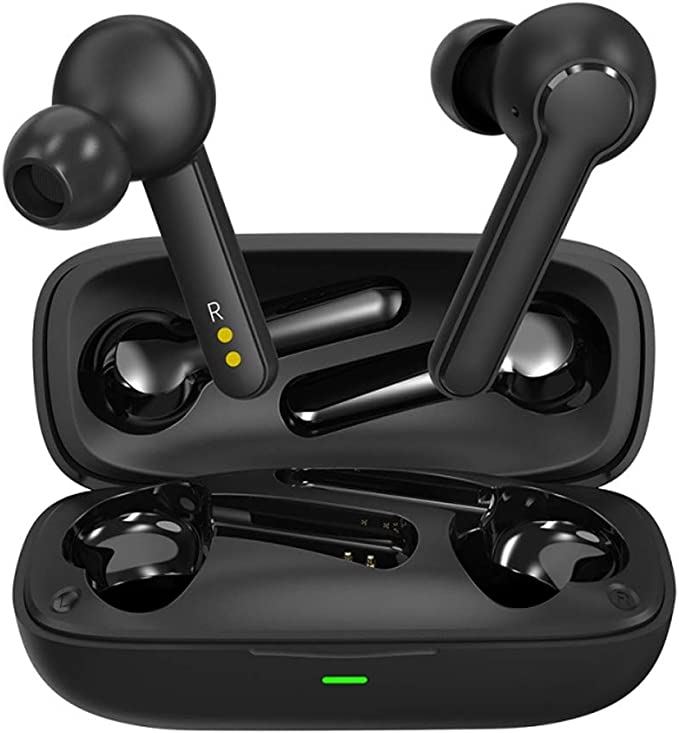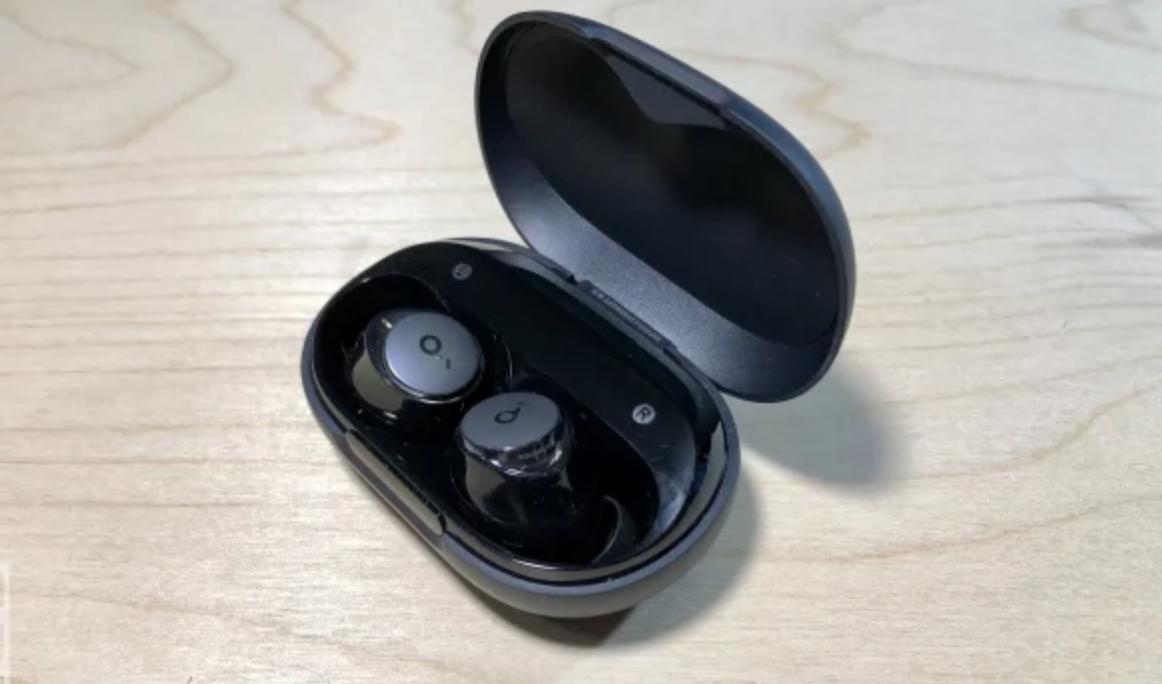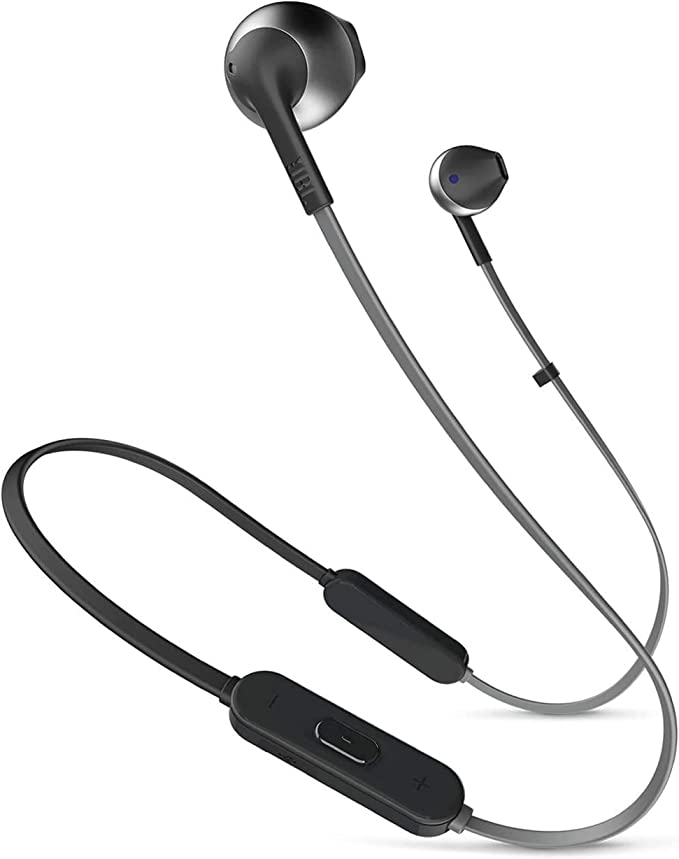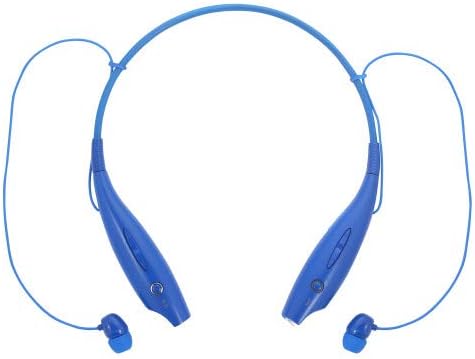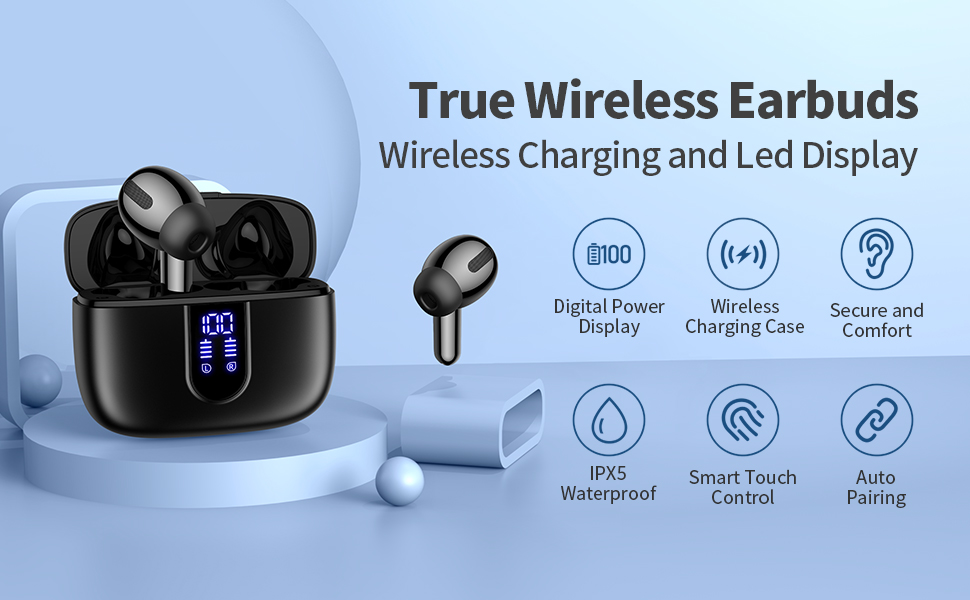KTGEE T08 Wireless Earbuds: Unpacking the Science of All-Day Audio and Seamless Connectivity
Update on May 19, 2025, 5:59 p.m.
We live in an era of personal sound bubbles. Whether it’s an energizing playlist on a morning run, a captivating podcast during the commute, or crucial calls connecting us across distances, tiny wireless earbuds have become indispensable conduits to our digital and auditory worlds. They nestle in our ears, often unnoticed, yet pack a remarkable amount of technology. Products like the KTGEE T08 Wireless Earbuds, offering features such as Bluetooth 5.3, extended playtime, and specific audio claims, provide an excellent opportunity to pause and explore the fascinating science and engineering we so casually wear. This isn’t a review, but rather an illumination of the technology within, using the T08 as our case study to understand the marvels that deliver our daily soundscapes.

The Unseen Symphony of Connection: Decoding Bluetooth 5.3
The very essence of “wireless” in earbuds like the KTGEE T08 lies in a technology whose name carries a surprisingly regal, historical echo: Bluetooth. Named after Harald “Bluetooth” Gormsson, a 10th-century Danish king famed for uniting disparate Danish tribes, the Bluetooth wireless standard was conceived in the 1990s by engineers at Ericsson in Sweden. Their vision was similarly unifying: to create a single short-range wireless standard to connect diverse devices like mobile phones, computers, and accessories. What started as a niche cable-replacement technology has blossomed into the invisible backbone of our interconnected personal gadgets.
The KTGEE T08 earbuds specify Bluetooth 5.3. This isn’t merely an incremental number; each version of Bluetooth has brought significant advancements. Early versions struggled with data speed, connection stability, and power consumption, often leading to clunky user experiences. Bluetooth 5.3, however, represents a mature iteration focused on efficiency and robustness.
So, what does Bluetooth 5.3 practically offer for an audio device like the T08? The product description mentions “more stable transmission, lower power consumption and offers extended range with fewer dropouts than Bluetooth 5.1.” Let’s unpack this:
- Lower Power Consumption: This is crucial for small, battery-operated devices. Bluetooth Low Energy (BLE), a key feature enhanced through successive Bluetooth versions, allows devices to communicate effectively while sipping power. This directly contributes to the T08’s ability to offer around 8 hours of playback on a single earbud charge. The chipset isn’t wasting precious battery life on inefficient communication.
- More Stable Transmission & Fewer Dropouts: Bluetooth 5.3 includes features like improved channel classification. Imagine radio waves as lanes on a highway; this feature helps the earbuds and your phone find less congested lanes, leading to a smoother, uninterrupted audio stream. This means your music is less likely to stutter when you walk through a crowded area with lots of other wireless signals.
- Extended Range (Potentially): While you’re unlikely to stray hundreds of feet from your phone with earbuds, the general improvements in signal propagation with newer Bluetooth standards mean a more reliable connection even at the edges of its typical personal-area network range.
The “One Step Auto Pairing” feature, where the T08 earbuds automatically reconnect to a previously paired device upon removal from their case, is a testament to the user-experience refinements built into modern Bluetooth stacks. The initial handshake is stored, and subsequent connections become almost instantaneous – a far cry from the often-manual and frustrating pairing processes of yesteryear. This seamless experience across diverse operating systems like iOS, Android, and Windows, as highlighted for the T08, is a core goal of the Bluetooth standard.

Crafting Your Auditory World: The Art and Science of 13mm Sound Drivers
Sound, at its most fundamental, is vibration. When you listen to music, your eardrums are vibrated by pressure waves traveling through the air. The components in your earbuds responsible for creating these precise vibrations are called drivers. The KTGEE T08 states it uses 13mm speakers (drivers).
Think of a driver as a miniature version of a large loudspeaker. It typically consists of a diaphragm (a thin, semi-rigid membrane), a voice coil (a coil of wire attached to the diaphragm), and a magnet. When an electrical audio signal from your phone reaches the earbuds, it passes through the voice coil. This creates a fluctuating magnetic field that interacts with the permanent magnet, causing the voice coil and the attached diaphragm to vibrate rapidly. These vibrations push and pull the air, creating sound waves.
The size of the driver – 13mm in this case – can influence its acoustic properties. A larger diaphragm surface area, generally, can move more air. This is particularly beneficial for reproducing lower frequencies, or bass. The T08’s claim of delivering “powerful bass, clear mids and bright treble” is what every audio engineer aims for. The 13mm driver, if well-engineered and tuned, has the physical capacity to produce that satisfying bass thump without overwhelming the mid-range frequencies where vocals and many instruments reside, or the higher frequencies that add crispness and detail.
However, driver size isn’t the sole determinant of sound quality. The diaphragm’s material, the magnet’s strength, the enclosure’s acoustic design, and the digital signal processing (DSP) applied to the audio signal all play crucial roles. The goal is to achieve a balanced frequency response – one where all audible frequencies are reproduced with appropriate intensity.
The term “Immersive Stereo Sound” refers to the spatial quality of audio delivered through two independent channels (left and right). Our brains use the subtle differences in timing and loudness of sounds reaching each ear to perceive direction and depth. Well-produced stereo recordings, delivered by capable earbuds like the T08 aim to be, can create a soundstage that feels wider and more enveloping than the physical space between your ears, allowing you to discern the placement of different instruments or sound effects.

The Quest for Clarity: Microphones and Noise Cancellation in a Noisy World
In our interconnected lives, earbuds are not just for listening; they are vital for communication. The KTGEE T08 features a “built-in mic in each bluetooth earphones” and utilizes “call noise cancellation to ensure clear and realistic sound.” This addresses a common pain point: trying to have a coherent conversation when surrounded by the cacophony of daily life – traffic, office chatter, or wind.
A microphone works like a driver in reverse: sound waves vibrate its diaphragm, which converts these vibrations into electrical signals. For call clarity, the challenge is twofold: accurately capturing the user’s voice and minimizing unwanted background noise.
“Call noise cancellation” (often abbreviated as CNC, or sometimes related to technologies like Qualcomm’s cVc - Clear Voice Capture, though the specific tech in the T08 isn’t detailed) typically uses signal processing algorithms. Here’s a simplified idea:
- Voice Pickup: One or more microphones are positioned to best capture the user’s voice.
- Noise Identification: These microphones also pick up ambient sounds. The system’s algorithms are trained to distinguish patterns characteristic of human speech from those of common noises (e.g., the steady hum of an air conditioner, the rumble of traffic, or even keystrokes).
- Noise Suppression: Once identified, the system attempts to reduce or filter out these unwanted sounds from the audio signal being transmitted to the person on the other end of the call.
The result, ideally, is that your voice comes through more clearly and intelligibly, even if your environment isn’t perfectly quiet. The T08’s aim to provide “clear and realistic sound” for calls hinges on the effectiveness of its microphone quality and these noise-cancellation algorithms.

Powering the Personal Soundtrack: Battery Longevity and Smart Charging
The freedom of wireless audio is fundamentally enabled by advances in battery technology. The KTGEE T08 promises a substantial 40 hours of total playback, with the earbuds themselves providing about 8 hours on a single charge (at 50%-60% volume), and the charging case holding the additional 32 hours. This impressive endurance is a dance between several factors.
At the core are compact Lithium-ion (Li-ion) batteries. These have become the standard for portable electronics due to their high energy density (storing a lot of energy in a small, light package), relatively slow self-discharge rate, and ability to be recharged hundreds of times. The efficiency of the Bluetooth 5.3 chipset, as mentioned earlier, plays a significant role by minimizing power drain during operation. Furthermore, the design of the audio drivers and amplifiers is optimized for power efficiency.
The charging case acts as a lifeline, a portable power bank specifically designed for the earbuds. When you stow the earbuds, they immediately begin recharging from the case’s internal battery. The T08’s case utilizes a Type-C charging port. The adoption of USB Type-C as a near-universal standard for modern electronics is a boon for consumers. Its reversible connector design eliminates the frustration of trying to plug it in the wrong way, and it typically supports higher power delivery rates, meaning the case itself can be recharged more quickly than with older micro-USB connectors.
A particularly user-friendly feature of the T08 is its built-in dual LED power display. This provides real-time feedback on the remaining charge in the case and the charging status of the earbuds. Such displays often use a simple microcontroller to measure the battery voltage. As a Li-ion battery discharges, its voltage drops in a predictable (though not perfectly linear) way. The microcontroller translates this voltage reading into an estimated percentage of remaining charge, giving users a clear indication of when it’s time to find a power outlet. This removes the guesswork and prevents the unwelcome surprise of dead earbuds just when you need them.

Engineered for Everyday Life: Design, Durability, and Intuitive Control
Beyond sound and connectivity, the physical design and robustness of wireless earbuds are critical for a positive user experience. The KTGEE T08 earbuds are rated IPX5 sweatproof. “IP” stands for Ingress Protection, a standard defined by the International Electrotechnical Commission (IEC). The first digit (replaced by “X” here) relates to protection against solid particles (like dust). An “X” means it hasn’t been specifically tested or rated for dust ingress. The second digit, “5” in this case, signifies protection against low-pressure water jets from any direction.
What does IPX5 mean for the user? It means the T08 earbuds are designed to withstand sweat during intense workouts and can handle light rain or splashes. You wouldn’t want to submerge them in water, but for most athletic activities or daily commutes where moisture is a concern, IPX5 offers a good degree of resilience.
Comfort is paramount for a device intended to be worn for extended periods. The T08 earbuds are described as having an “ergonomic semi-in-ear design” and weighing just 0.12 ounces (approximately 3.4 grams) for a single earbud. The “semi-in-ear” design (sometimes compared to the Apple AirPods’ classic fit) rests in the concha of the ear rather than extending deeply into the ear canal with a sealing tip. Many users find this style more comfortable for long-term wear as it exerts less pressure and allows for some awareness of ambient sounds, which can be preferable for safety or comfort. The lightweight nature, achieved through careful material selection and component miniaturization, further minimizes any feeling of bulk or pressure. The goal of a “painless” fit is central to enjoyable long-term use.
Interaction with the KTGEE T08 is facilitated by Smart Touch Control. This technology almost invariably relies on capacitive sensing. Your skin is electrically conductive. When you touch a specific area on the earbud, your finger changes the local capacitance (the ability to store an electric charge) of a sensor embedded beneath the surface. This change is detected by a microcontroller, which then translates the tap or gesture (e.g., single tap, double tap, long press) into a command – play/pause, skip track, adjust volume, answer/end calls, or activate a voice assistant. This offers a convenient, button-free interface that can be operated without fumbling for your phone. The ability for each T08 earbud to work independently (“share one earbud with your partner”) adds another layer of flexibility for different listening scenarios.

The Invisible Tech That Colors Our World
The KTGEE T08 Wireless Earbuds, like many of their contemporaries, are more than just accessories; they are compact packages of sophisticated technology. From the invisible dance of radio waves in Bluetooth 5.3 ensuring a stable and efficient connection, to the meticulously engineered 13mm drivers vibrating to create rich soundscapes, and the intelligent power management that keeps the music playing for hours on end – every feature is a testament to decades of scientific advancement and engineering refinement. The practical considerations of IPX5 water resistance, ergonomic lightweight design, and intuitive touch controls further demonstrate a focus on real-world usability.
As consumers, we often experience these technologies as simple conveniences. Yet, by peeling back the surface, we gain a deeper appreciation for the ingenuity that makes our modern, untethered, and personalized audio experiences possible. The journey from cumbersome wired headphones to sleek, powerful wireless earbuds like the T08 highlights a relentless drive towards miniaturization, efficiency, and enhanced user experience. The once-premium features are now increasingly accessible, allowing more of us to curate our own perfect soundtrack to life, unencumbered and uninterrupted. And as technology continues its rapid march, one can only anticipate that the personal audio experiences of tomorrow will be even more seamless, immersive, and intricately woven into the fabric of our lives.
